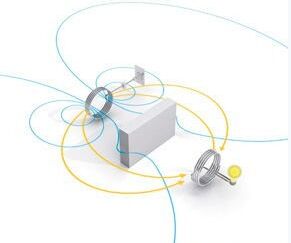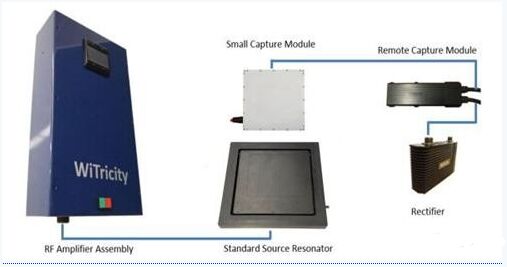
WiTricity has an MIT background that specializes in electromagnetic resonance wireless charging technologies for consumer, industrial, medical, and military applications. The company's CEO Alex Gruzen said that the wireless charging device developed by Witricity has reached the order of electric vehicles, with a maximum power of tens of kilowatts, more than the current 3.3 or 6.6 kilowatts on the market.
This article refers to the address: http://
In addition to this new technology, WiTricity has also updated its leadership team in recent months, with the brunt of appointing Gruzen as the new CEO in April to replace Eric Giler. During his five-year tenure at Eric Giler, he successfully established the company's business foundation and strength. In the future, Giler will continue to serve on the board of WiTricity. The new CEO Gruzen previously worked as a senior executive at Dell, HP, Compaq, and Sony.
At the same time, WiTricity also hired Farooq Butt, who served as vice president and senior vice president of global business development at Dell. WiTricity also hired Donald Peck, who previously worked for EVP and CFP in the Lojack Group, as the new CFO.
While updating the leadership team, WiTricity continues to invest more money ($25 million last year) into the automotive industry, working with partners such as Delphi, Toyota, IHI, Mitsubishi, and TDK.
WiTricity's technology is based on the strong resonance of the electromagnetic field. Even if the separation distance is several times the size of the device itself, the electric power can be transmitted efficiently. It is a non-radiative energy conversion that relies on electromagnetic near-field operation. The specially designed electromagnetic resonance device is a unique component of this technology and can efficiently transfer power over long distances in an electromagnetic near field. This electric field can bypass the conductive obstacle between the power source and the receiving device, so the exchange of power is not affected.
The power exchange efficiency depends on the relative size and distance of the power source and the receiving device. The maximum efficiency is achieved when the distance between the devices is small, up to 95%.
Alex Gruzen said: "Since the company was founded, WiTricity has not stopped the development and marketization of electromagnetic resonance technology. From the beginning we even used three feet of wide copper wire as the material. From 2005 to the present, we have Great progress has been made. We offer customized solutions ranging from low-cost devices ranging from a few millivolts to compact levels to kilowatts for electric vehicles."

High power version
In addition to the 3.3 kW product for low-end electric vehicles, and later the development of 6.6 kW new products, this number has now increased to tens of kilowatts. It is a widely applicable technology. As battery prices decrease and size increases, more powerful charging devices will be developed to keep pace with the automotive industry.
Gruzen also said that wireless charging technology, including public infrastructure, is also very attractive for plug-in hybrids. "The convenience it offers is enormous. In plug-in hybrids, battery size. Generally, users of this model will hesitate after driving home and stopping in the garage: this time, there is no need to charge. When the battery is not full, the fuel consumption of such vehicles is difficult to reach the optimal level. Wireless charging, these small size batteries can be automatically charged every time you stop, easy to maintain full power, greatly improving the user experience."
WiT-3300 Developer Set
For plug-in cars, WiTricity offers its partners the WiT-3300 Developer Suite with an efficient wireless “stop-and-charge†system.
The WiT-3300 delivers up to 90% efficiency at a power level of 3.3 kW (same power as most wired devices). Wireless charging supports a ground clearance of 10 to 20 cm while providing the possibility of customization to accommodate higher or lower ground clearances. Any kind of non-metallic material can be installed between the power source and the receiving device, so the power source device can be installed under the garage floor, which can cover cement, asphalt and other materials.
The WiT-3300 does not require a complete alignment of the power and receiving devices to enable efficient charging. Compared to traditional electromagnetic induction-based wireless charging devices, this highly coupled electric field resonant energy transfer method reduces the size of the system by four times, reduces the weight by two times, and is more efficient.
Optional optional equipment includes: Foreign Object Detection (FOD) foreign object sensor and Live Object Detection (LOD) biosensor to improve the safety of the charging process.
· FOD system: located inside the power source housing to detect metal foreign objects and metal fragments that can affect charging, and automatically stop charging when foreign matter is found to prevent metal electrothermal effect.
• LOD system: It detects animals and humans within the working range and can automatically stop charging if necessary.
We are the SMD Flashing LED from China,
SMD Flashing LED is a SMD LED with flash function, which include single chip flash LED, double chips flash LED, RGBW LED fast flash LED, RGBW slow flash LED, strobe light LED and addressable SMD LED. Single flash LED and RGBW flash LED widely used in LED toys and decoration LED, like LED twinkle Light, Christmas lights, string lights ect. And the addressable SMD LED have a build in IC like: S2812RGB,SK6812RGB,SK6812RGBW,SK9822RGB,APA102RGB to control the emitting mode. In addition, we also supply the 5050 RGB slow flash LED, 5050 RGB fast flash LED ect.
SMD Flashing LED
SMD Flashing LED, Silicone SMD Flashing LED, Remote Controlled SMD Flashing LED, Sound Sensor SMD Flashing LED
Shenzhen Best LED Opto-electronic Co.,Ltd , https://www.bestsmd.com